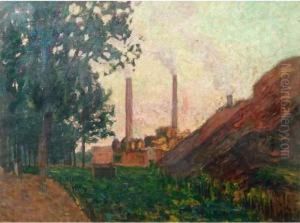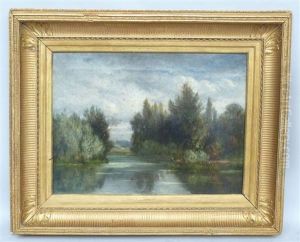Eugene Tourneux Paintings
Eugène Tourneux was a French artist known for his contributions to the art world during the 19th century. Born on August 28, 1839, in Montmirail, France, Tourneux's life was deeply intertwined with the evolution of French art during a period of significant change and innovation. Though not as widely recognized as some of his contemporaries, Tourneux’s work provides valuable insights into the art and culture of his time.
Tourneux's early life was marked by a passion for the arts, and he quickly dedicated himself to developing his skills. Like many artists of his era, he moved to Paris to study and immerse himself in the vibrant art scene of the capital. His work primarily focused on painting, though he was known to experiment with various techniques and mediums. Tourneux's style was influenced by the Romantic movement, which was waning as he came of age, and the emerging Impressionist movement, which sought to capture the fleeting effects of light and color.
Throughout his career, Tourneux exhibited at various salons and galleries, gaining respect among his peers and art aficionados. His subjects varied widely, from landscapes and urban scenes to portraits and historical events, reflecting the breadth of his interests and his keen observation skills. Despite his talent and the quality of his work, Tourneux never achieved the level of fame enjoyed by some of his contemporaries. This may be attributed to his somewhat conservative style at a time when the art world was rapidly embracing more radical forms of expression.
Tourneux's contribution to art extends beyond his own creations. He was an active member of the artistic community in Paris, engaging with other artists and contributing to the vibrant cultural life of the city. His work, though not as revolutionary as that of some of his peers, played a role in the transition between traditional and modern art forms in France.
Eugène Tourneux died on November 21, 1903, in Paris. Today, his work is preserved in various museums and collections, serving as a testament to his skill and dedication to the arts. While he may not be as well-known as other artists of his time, Tourneux's paintings offer a captivating glimpse into the 19th-century French art scene, embodying the spirit and challenges of a pivotal period in art history.



